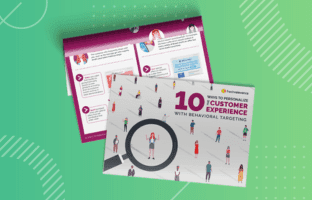learning path
The Complete Guide to Market Segmentation

Have you ever been guilty of wishing your shoppers were just a homogenous bunch of people with the same hopes and dreams? Sure, your eCommerce business would get a lot more mileage out of that one marketing campaign, but the unsurprising reality is that your shoppers are diverse individuals.
Beyond the obvious demographic differences, they all behave differently on your website and have their own life goals, values and beliefs. This means that what strikes a chord with some shoppers, won’t resonate with others or worse, will alienate them.
Enter market segmentation, the marketing tactic that helps you identify targeted groups of consumers and deliver relevant content to each segment, in turn boosting conversions and loyalty.
In this article, you’ll discover:
- What market segmentation is
- 4 types of market segmentation
- Market segmentation examples
- Benefits of market segmentation
- Monitoring your segments
- Segmentation tools
What is market segmentation
Market segmentation describes the act of grouping shoppers into segments based on similar characteristics and delivering targeted marketing to those segments.
4 types of market segmentation
There are four key types of segmentation:
- Demographic
- Geographic
- Psychographic
- Behavioral
Let’s look at each type of segmentation in more detail.
1) Demographic segmentation
Demographic segmentation is when you group your audience into segments based on demographic factors, such as age, gender, family size or income. These seemingly basic pieces of information can be valuable when it comes to targeting your marketing. However, as other types of more advanced segmentation came into existence, demographic segmentation has become less and less relevant, since factors such as age and gender can be too basic to determine what will resonate with an individual. (Ozzy Osbourne and Prince Charles are both the same age, male, wealthy and self-employed, for example.)
2) Geographic segmentation
Geographic segmentation is when you group your audience into segments based on location, such as town, state or country. This is a great way to keep the customer experience relevant and convenient, for example by sending shoppers recommendations for products that are available in their area.
3) Psychographic segmentation
Psychographic segmentation is when you group your audience by factors such as their interests, activities and lifestyle. Whereas previously, marketers had to rely on demographic and geographic segmentation to tailor their marketing, psychographic segmentation has become much easier to undertake thanks to factors such as social media and an increased focus on capturing zero-party data.
4) Behavioral segmentation
Behavioral segmentation is when you group your audience by purchase and browsing behavior, and how they interact with your marketing. This type of segmentation allows you to be hyper-targeted by looking at how shoppers have acted in the past and how they are likely to act in the future.
Market segmentation examples
Demographic segmentation
Feel Good Contacts uses demographic segmentation to target their student shoppers with popovers encouraging them to use the company’s student discount. By only showing this content to students, Feel Good Contacts avoids wasting precious website real estate and can show their other visitors different content.
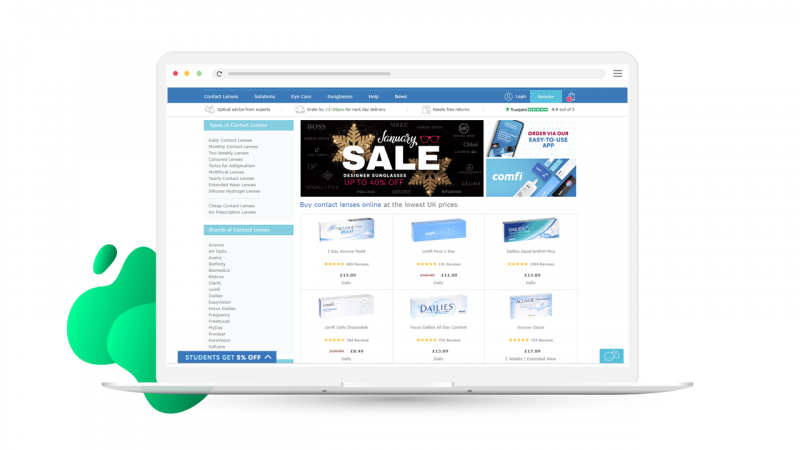
Source: feelgoodcontacts.com
Discover Feel Good Contact’s success story
Geographic segmentation
Cooksongold identifies whether visitors to their website are based in the UK, EU or the rest of the world and displays a tailored welcome offer and free delivery information depending on where they are based. This ensures that each website visitor sees practical information that’s most relevant and useful to them, helping to create a more convenient customer experience.
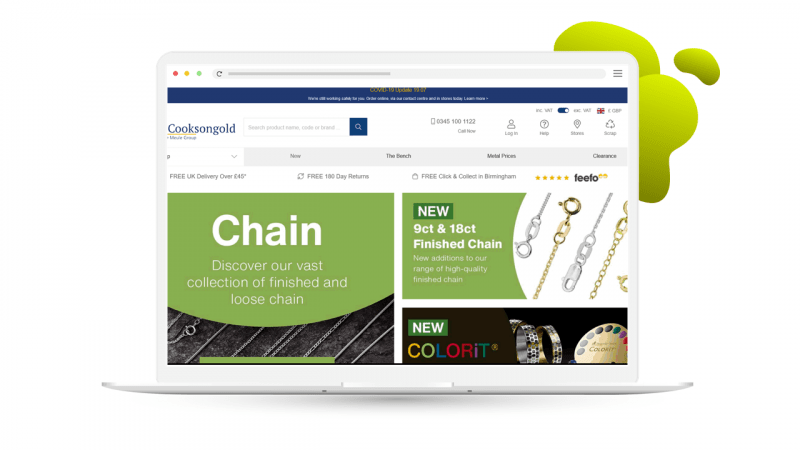
Source: cooksongold.com
Discover Cooksongold’s success story
Psychographic segmentation
Pet retailer Animed Direct captures zero-party data on the type of pet their shoppers have, and then uses that data to segment their email subscribers. The retailer created two versions of their Christmas email banner – one for dog owners and another for cat owners with images of each respective animal – and sent the relevant email to each segment. This allows Animed Direct to really catch each subscriber’s attention with dynamic content that is most likely to resonate with them.
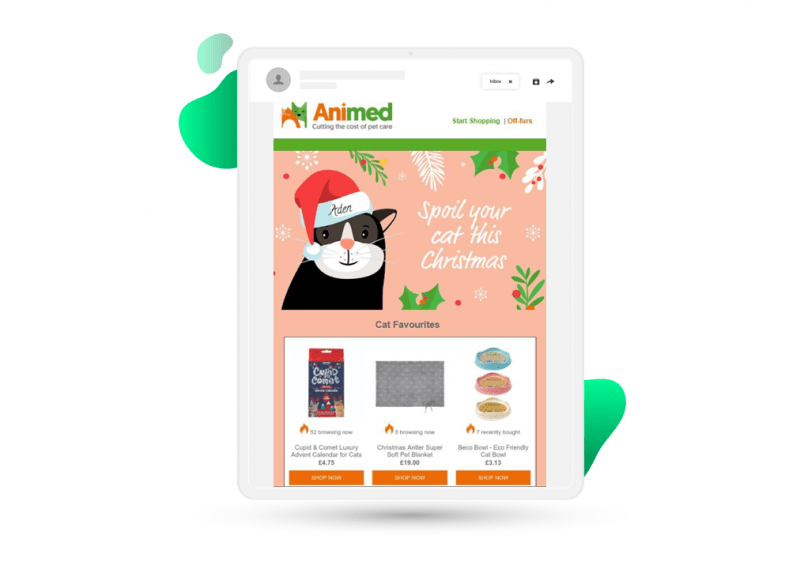
Source: Animed Direct email
Discover Animed Direct’s case study
Behavioral segmentation
Children’s clothing retailer Kleertjes.com sends their shoppers branded newsletters, whereby any customer who buys a certain brand will receive an email with recommendations as soon as that brand’s new collection is released. This enables them to inspire their customers with products that are most likely to appeal to them based on past purchase and browse data.
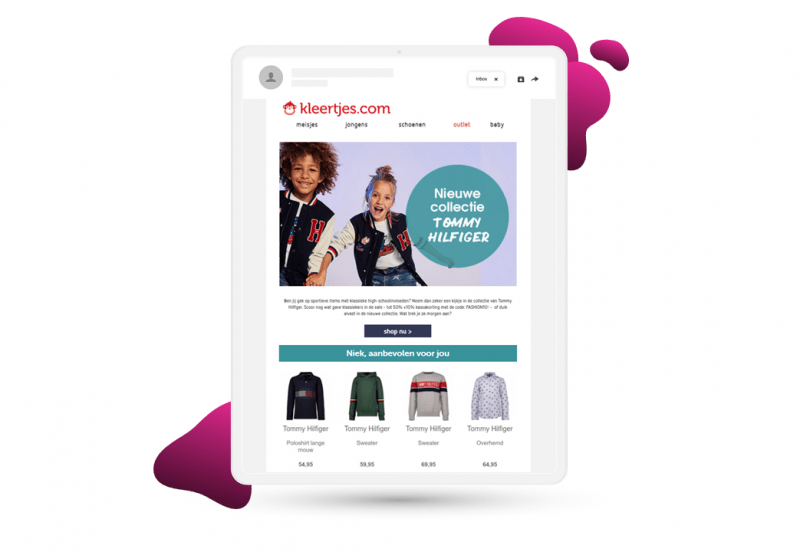
Source: Kleertjes.com email
Discover Kleertjes.com’s success story
Killstar shows that behavioral segmentation can also work for new visitors to your site. The brand uses real-time browse data to identify whether the shopper is interested in women’s or men’s clothing and tailors the homepage banner and product recommendations accordingly. This allows Killstar to keep new shoppers engaged by showing them products that are most likely to spark their interest.
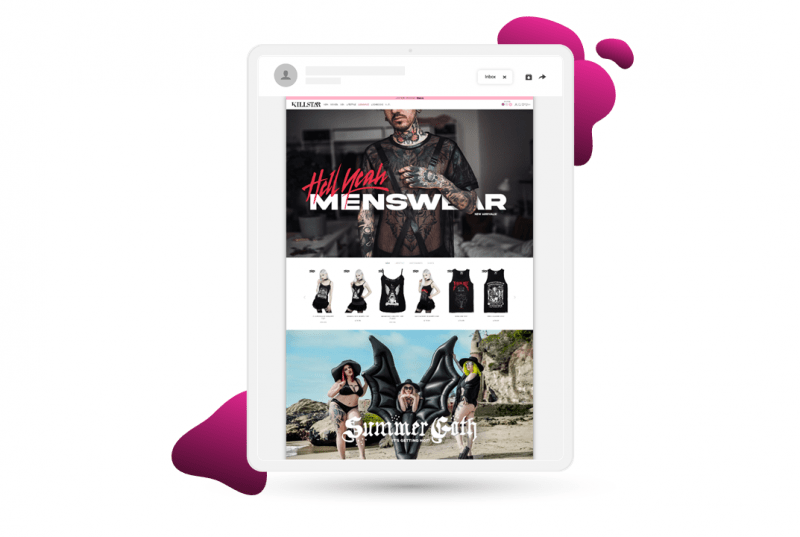
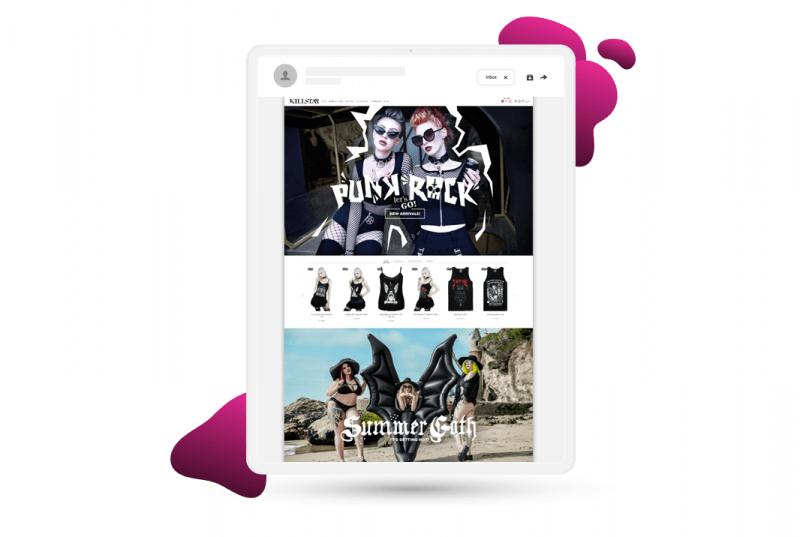
Source: killstar.com
Benefits of market segmentation
1) Increased conversion rate
One-size-fits-all marketing is a thing of the past. By segmenting your audience and tailoring your marketing to each group, you’re more likely to resonate with the wants and needs of those shoppers and boost conversions by showing them products they’re interested in and brand messaging that speaks directly to them.
2) Increased customer retention and loyalty
Today’s consumers expect retailers to provide a tailored experience, especially retailers they’ve shopped with before. More than one in three shoppers find it frustrating to see offers aimed at new shoppers that they’re unable to use as an existing customer, and one in four shoppers want retailers to make it easy for them to discover products they might like. With segmentation, businesses can acknowledge the relationship they have with their existing customers and provide them with the tailored content, such as personalized product recommendations.
3) Reduced customer acquisition costs
When you fire out generic bulk emails and website content to your entire audience, it’s unlikely you’ll resonate with everyone, which in turn means your marketing budget will yield a smaller number of conversions. With segmentation, whilst you’ll need to invest initially in technology and research, you can make your marketing work smarter and reduce the cost it takes to acquire each customer.
4) Improved email performance
A bonus benefit of segmentation is improving your email performance. By sending targeted content that resonates with each segment, your shoppers will be more engaged with your email marketing and more likely to click-through to your website. A survey from Mailchimp found that open rates for segmented email campaigns are 14% higher than non-segmented campaigns. What’s more, click rates are 101% higher for segmented email campaigns compared to non-segmented campaigns.
Monitoring your segments
Market segmentation isn’t a case of set and forget. Once you have your segmentation strategy in place and you’re targeting each group with specific content, it’s important to monitor the performance and behavior of your segments.
Here are some key metrics to monitor for each segment:
Average order value
Is the average order value consistent with the marketing efforts you’re devoting to this group of customers?
Time of purchases
Are there spikes in purchases after particular marketing emails?
Last time they made a purchase
Are members of this segment making frequent purchases or have they lapsed?
How often they abandon their carts
Do members of this segment abandon their carts frequently?
You can use this information to double down on marketing to high-spending segments, for example, or identify segments that aren’t engaging as you’d hoped and modify your marketing. You can also compare metrics for your segments against the metrics for your entire database to understand whether market segmentation is producing better results than the average.
Segmentation tools
Fresh Relevance’s Segments tool allows you to group and target people using data captured from your website or imported from your ESP and CRM based on certain criteria you specify.
Once your segments have been created, our tool enables you to review high level metrics, performance metrics and behavioral insights, and compare against other segments.
Learn more about the Fresh Relevance Segments tool and book a demo to find out how we could help you achieve your market segmentation goals.
FAQs
What are the 4 customer segmentation models?
The four types of segmentation are demographic (age, gender, income, etc.), geographic (location of the customer, store, or company), psychographic (interests, lifestyle, etc.), and behavioral (purchase and browse behavior and marketing interactions).
Why is customer segmentation important for ecommerce?
Customer segmentation allows eCommerce businesses to tailor marketing strategies, products, and experiences for distinct customer groups. This boosts relevance, engagement, and conversion rates, enhancing satisfaction and revenue. Customer segmentation is a crucial part of ecommerce personalization.
What is the main purpose of customer segmentation?
Customer segmentation allows marketers to divide a diverse customer base into distinct groups based on shared characteristics, behaviors, or preferences. This enables businesses to deliver personalized marketing, products, and services, ultimately boosting customer satisfaction and revenue.

